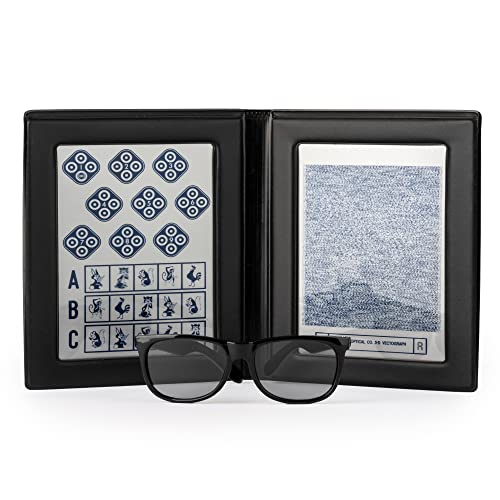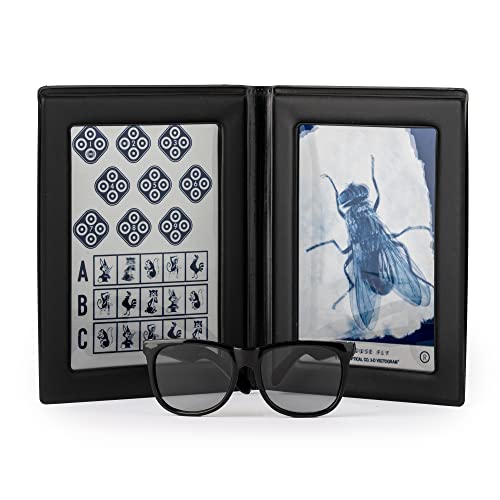Depth Perception
The ability to see the world in three dimensions is known as depth perception. It develops in infants at a very young age. Without depth perception, it would have been tough for people to judge how far away objects are. Both human beings and animals use depth perception to move accurately or to give a consistent response. Various cues help to perceive depth in the world. For example, some of them use the vision of only one eye, while others use the field of vision of both eyes.
Perception Definition
Perception refers to the ability to take all the sensations people experience around them at a given moment and interpret them meaningfully. It can differ from one person to another. For example, two people might be looking at a cloud – while one thinks it is shaped like a dinosaur, the other thinks it looks like a dragon.  They see the same cloud simultaneously, but their perception and interpretation differ. Depth perception depends on various perspectives and variables.
They see the same cloud simultaneously, but their perception and interpretation differ. Depth perception depends on various perspectives and variables.
One of the best examples to illustrate perception is using the optical illusion of Rubin’s vase. Some people see it as a vase because they pay more attention to the black area. At the same time, others see two faces because of the white space. Most people can see both, but only one at a time.
| # | Preview | Product | Rating | Price | |
|---|---|---|---|---|---|
| 1 |

| Depth Perception | Buy on Amazon | ||
| 2 |

| Precision Vision Stereo Butterfly Depth Perception... |
$235.00 | Buy on Amazon | |
| 3 |

| Stereo Fly Vision Test (SO001) for Evaluation of Gross... |
$235.00 | Buy on Amazon |
Perceptual Constancy
Perceptual constancy perceives a familiar object as having a definite or constant shape, size, and brightness. Even when there is a change in the stimulus, this perception does not change. For example, you are on a train heading towards a high-rise city. From far, those buildings appear to be tiny dots you can cover with your palm. But as you move towards the buildings, they seem more prominent, and your palm cannot protect them anymore. But you know that the buildings have not gone taller. They have consistency in their size, shape, and brightness. And you know this because of perceptual constancy. So size, shape, and brightness are the three constancies of perception.
Size constancy: It always interprets an object as having the same actual size, regardless of its distance.
Shape constancy: It interprets an object as having a constant shape, even when its shape changes in the retina.
Brightness constancy: It tends to perceive an object having the same apparent brightness, even when the light conditions change.
Difference between Perception and Perspective
Perception: Perception is what you interpret through the ability to see, hear, or become aware of something through the senses. Perception does not develop overnight. It is based on our beliefs, which we reference to perceive something.
Perspective: Perspective is our “point of view” – how we see or think about something logically. And this Perspective comes from our perception.
Perception can change your Perspective.
Indeed, your change in perception can change the way you see or think about something. For example, it is said that success is the core of all joy. Most people believe that you will have all the happiness if you are successful in your life. What happens when you want to change your perception of this saying? First, you believe that it is happiness that is the key to a successful life. Now that your perception has changed, you think if you stay happy, you can do anything to succeed.
Monocular cues
The cues used to perceive depth using the vision of only one eye are called monocular cues. They are also known as pictorial depth cues because artists sometimes use them to create the illusion of depth in paintings and drawings. The following are the monocular cues-
Linear Perspective:
It is the tendency to visualize parallel lines appearing to be converged on each other. For example, when you look down at a long highway, the two sides of the road seem to join together.
Relative size:
The perception occurs when people expect a specific size of objects, but they appear to be small. Hence, it is assumed that the things are far away from them. Filmmakers use this technique to make their small casts look more extensive and in the distance.
Overlap:
It assumes that an object blocked by another object is behind the second one and far away. It is also called interposition.
Aerial Perspective:
It is the haziness surrounding the objects that are farther away from the viewer. Therefore, the viewer perceives the distance to be more significant. Because of this, mountains in the distance look fuzzy and buildings blurry.
Foundations of Sensation and Perception, by Zones of Religio
If you want to know about the depth perception from the root level to advance level you can buy this book. I have also one of its collection. This book helps me a lot.
Texture gradient:
Textured surfaces appear smaller and smoother as the distance between the viewer and the surface increases. This tendency is called a textured gradient. For example, when you walk on a pebble or brick-covered street, the rocks and bricks closer to you appear distinctive. But as you look into the distance, you can see that the surface has become smaller and finer.
Motion parallax:
The perception of an object’s motion in which close things seem to move faster than the objects in the distance. When you travel by car or bus, you can see that the vehicles closer to you move quicker than those far away.
Accommodation:
It is not one of the pictorial cues. Here, the brain uses the information of the changing shape or thickness of the eyes’ lens in response to near or far away objects from the viewer. It is also known as a muscular cue.
Binocular cues
The cues used to perceive the depth using both eyes are called binocular cues. Such cues are –
Convergence: The rotation of the two eyes in their sockets focuses on a single object. This results in closer things having greater junction and distant things having lesser. For example, if you hold your finger in front of your nose and move it back and forth, the feeling you get in the eye muscle is the convergence.
Binocular disparity: The image difference between the two eyes appears to be greater for closer objects and smaller for far-away objects. You can notice this difference by holding an object close to your nose. Close one of your eyes and mark the object’s position. Then open one eye and close the other one. Again, there should be a significant difference in the views.
How far can the Human eyes see?
It has been thought that people can see the flame of a burning candle from up to 30 miles away. But new research by astronomers Professor Kevin Krisciunas and Don Carona has discovered that the burning candle will only be visible to our naked eyes up to a distance of 2.576 meters or 1.6 miles. The candle’s brightness would be as much as that of the faintest star at this distance, which has a magnitude of 6.
In other research, it has been found that our ability to see the farthest object depends on the health of our eyes and the place from where we are looking. Since the earth is curved, if we stand on a flat surface with our eyes 5 feet off the ground, our eyes can see the farthest edge is around 3 miles away. So, if the earth was not curved, then we might have been able to see objects from hundreds of miles away. The depth perception test can give us an appropriate result about the distance cues.
You may also like:
- Binocular & Monocular Cues for Depth Perception
- Why is Psychology Considered Social Science?
- Psychology Clipart | Make your Presentation Alive
- Sike You Thought | What is a Winter Storm Sike Nigga You Thought?
- Touchstone Imaging: Sike Your Thought
- How to manipulate people’s Minds | Best dark psychology books
Last update on 2026-01-03 / Affiliate links / Images from Amazon Product Advertising API


